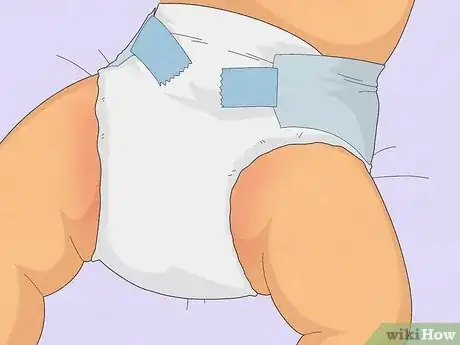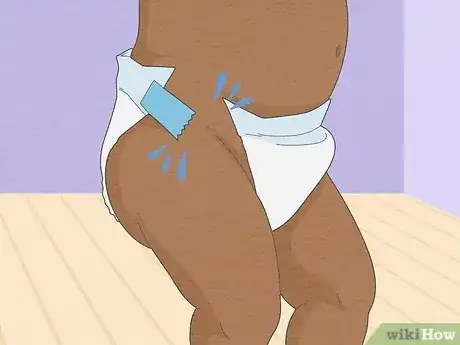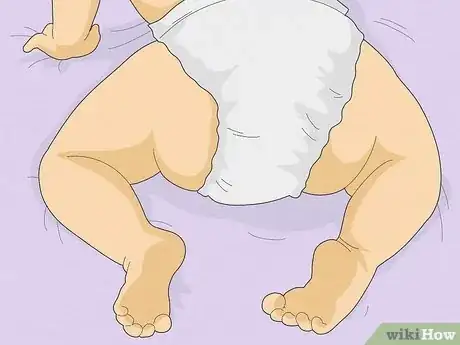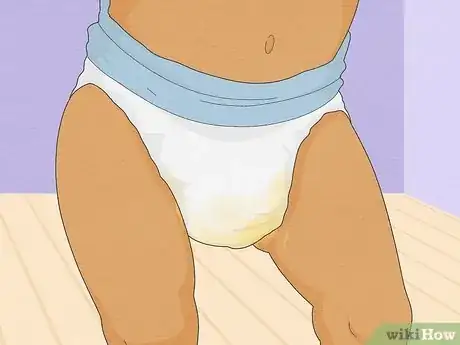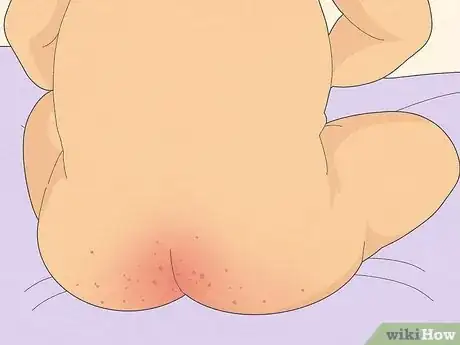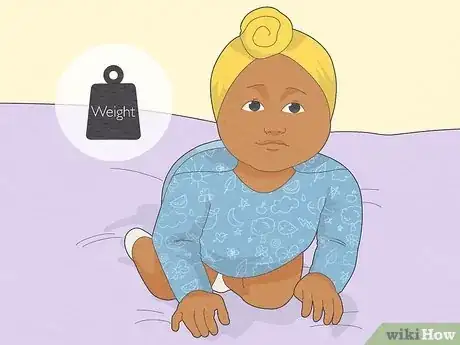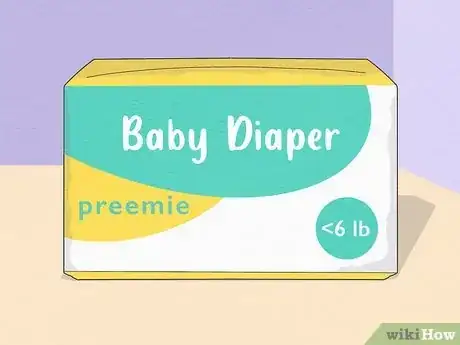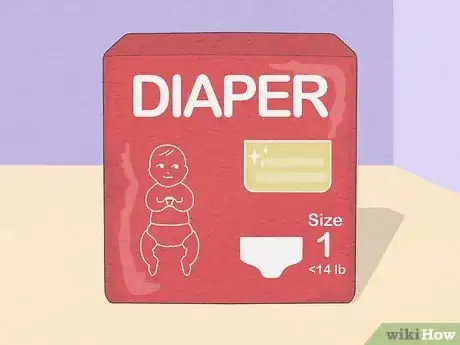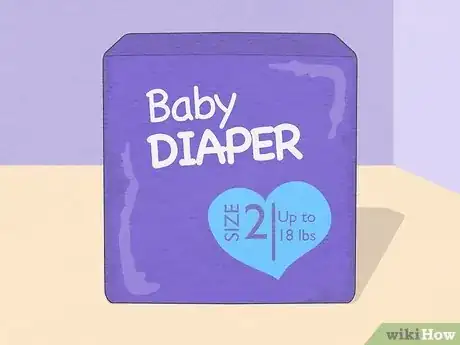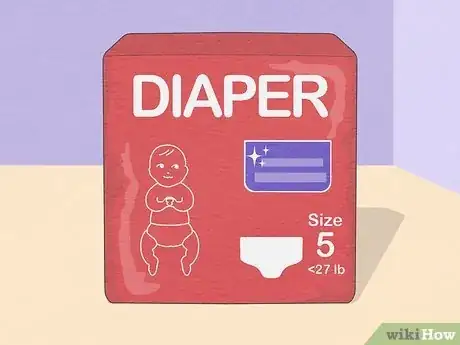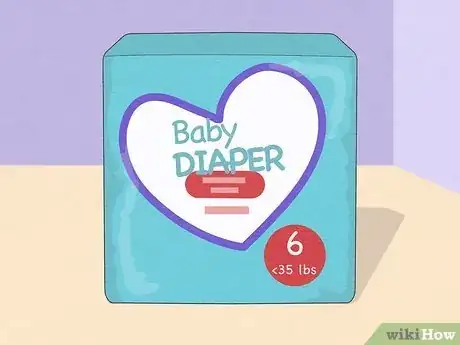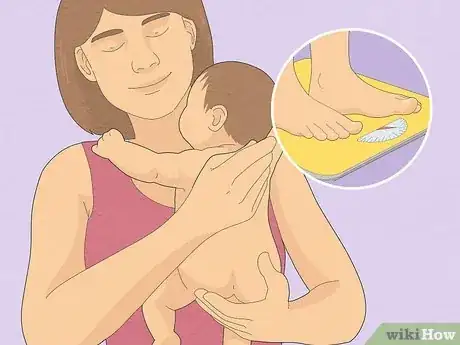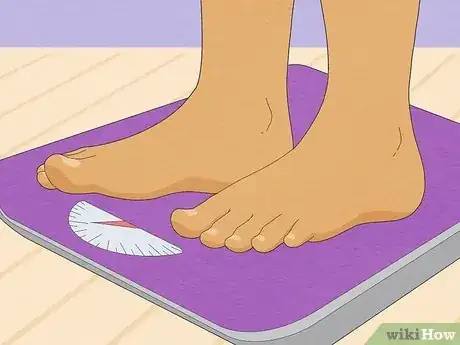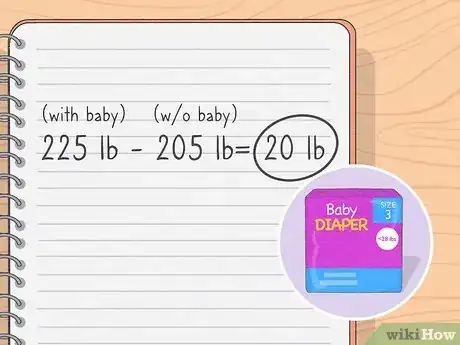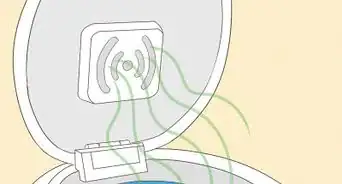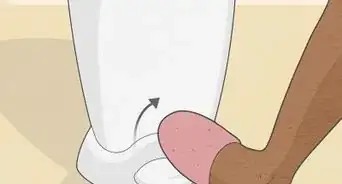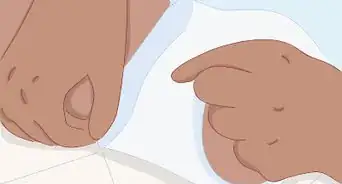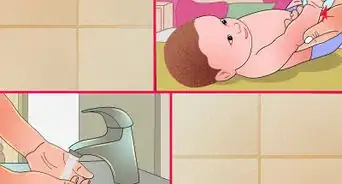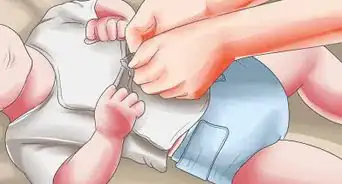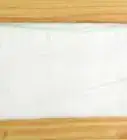This article was co-authored by wikiHow staff writer, Hannah Madden. Hannah Madden is a writer, editor, and artist currently living in Portland, Oregon. In 2018, she graduated from Portland State University with a B.S. in Environmental Studies. Hannah enjoys writing articles about conservation, sustainability, and eco-friendly products. When she isn’t writing, you can find Hannah working on hand embroidery projects and listening to music.
This article has been viewed 3,894 times.
Learn more...
As a first-time parent, you always want what’s best for your baby. But if you step into the diaper aisle and immediately feel overwhelmed with all the different sizes, shapes, and colors, you’re not alone. Fortunately, there are some telltale signs to watch out for when deciding whether or not to size up your baby’s diapers. We’re here to let you in on all the secrets about diaper sizing, including a diaper size chart and how you can weigh your baby at home.
Things You Should Know
- Your baby may need to size up in diapers if their skin is irritated or they seem uncomfortable.
- You may also need to size up if the leg holes are tight or your baby’s bottom is exposed.
- Diapers are sized by weight, not age, so pick the right diaper based on how heavy your baby is.
Steps
How to Weigh Your Baby at Home
-
1Take off your baby’s clothes and diaper. Since babies are so small, even a onesie or a diaper can skew the scales. Undress your baby and keep them nearby as you prepare to weigh them.[9]
- Weighing your baby at home is slightly less accurate than getting them weighed on a baby scale in the doctor’s office. However, it’s accurate enough to help you choose the right diaper size for your baby.
-
2Step onto a scale while holding your baby. Use an electronic scale that’s meant for adults. With your baby in your arms, step onto the scale and mark down the weight listed.[10]
- Try to center the baby on your torso and hold them close to you so that the scale is as accurate as possible.
-
3Step onto a scale without holding your baby. Hand your baby off to another adult or set them down in a safe spot. Then, step onto the scale a second time, and note the number.[11]
-
4Subtract your weight from your combined weight to find your baby’s weight. Ready for some quick math? All you need to do to find your baby’s weight is subtract your own weight from that first number. Then, you’ll have a mostly accurate weight for your baby to help you when you set out to buy diapers.[12]
- For instance, maybe the first number was 225, and the second number was 205.
- 225 - 205 = 20, so your baby is 20 pounds.
References
- ↑ https://www.parents.com/baby/diapers/diaper-sizes-how-to-find-the-right-fit-for-newborns-babies-and-toddlers/
- ↑ https://www.parents.com/baby/diapers/diaper-sizes-how-to-find-the-right-fit-for-newborns-babies-and-toddlers/
- ↑ https://www.goodhousekeeping.com/life/parenting/a32960612/diaper-sizes-guide/
- ↑ https://www.goodhousekeeping.com/life/parenting/a32960612/diaper-sizes-guide/
- ↑ https://www.parents.com/baby/diapers/diaper-sizes-how-to-find-the-right-fit-for-newborns-babies-and-toddlers/
- ↑ https://www.mayoclinic.org/diseases-conditions/diaper-rash/symptoms-causes/syc-20371636
- ↑ https://www.parents.com/baby/diapers/diaper-sizes-how-to-find-the-right-fit-for-newborns-babies-and-toddlers/
- ↑ https://www.goodhousekeeping.com/life/parenting/a32960612/diaper-sizes-guide/
- ↑ http://www.stpaulsmaternity.ca/wp-content/uploads/2020/04/Weighing-Your-Baby-At-Home-PDF.pdf

